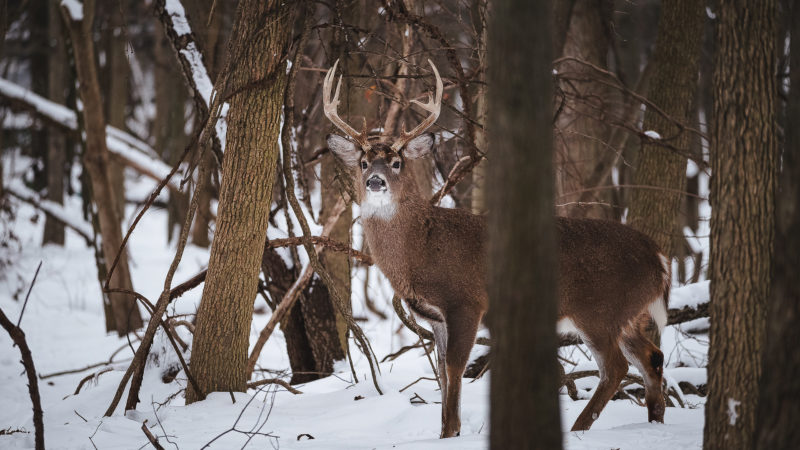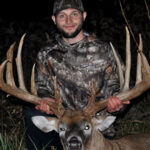Most deer hunters find themselves on an endless quest for answers to why deer do the things they do. None of which compare to the million dollar question – What makes a buck move?
We all want to know what makes a buck do the things he does. But knowing his movement is the key to success.
So, what are the variables that make bucks move? Lindsay Thomas Jr. of the NDA gives some great insight in the video below. Check it out for a closer look at 4 things that make bucks move.
Food
The first variable Thomas mentions that causes deer to move is their need for feed. “Deer need 6-8 percent of their body weight in forage every day for maintenance and survival,” says Thomas. “That’s 10 pounds of food a day for a deer weighing about 150 pounds.”
Food sources change rapidly throughout the hunting season. Find the hot food source, and you’ll find bucks on the move.
Time of Day
Studies show that deer movement peaks twice every 24 hours. And those peak times are dawn and dusk. They always have been, and always will be. Thomas says this is true in all seasons, and all weather conditions.
Regardless of whether you call it prime time, the golden hour, power hour, or whatever – the key is to be in the stand as much as possible during that first and last hour of the day. That’s when deer will be on the move.

The Rut
It may come as no surprise that bucks move more during the rut than at any other time of the year. This is when hunters see the uptick in daylight movement as well. Yes, dawn and dusk will still experience the greatest movement, but it can happen all day long during the rut.
So, despite when the rut occurs in your home state, be sure to maximizing your time on stand during the rut. This is when bucks will be on the move. It’s a great time to cash in on sick days and vacation time.
Hunting Pressure
Hunting pressure can be a beast when it comes to putting bucks on the move. Your hunting pressure, as well as the pressure produced by your neighbor, can cause bucks to move in a hurry. Unfortuantely, this is not likely to be the movement you’re wanting to see.
Bucks quickly respond to hunting pressure. “Studies show that bucks immediately began to skirt around a deer stand location when it was used by a hunter,” says Thomas. “And those deer stayed away from that stand location for the next 2-4 days after the area had been hunted.”
Hunters work hard to pattern deer, but they need to work just as hard to make sure deer don’t pattern them. Mix it up. Break away from your routine. Approach the stand from different directions. Always keep the deer guessing. Once they figure you out, your chances for success go way down.

 By
By 



